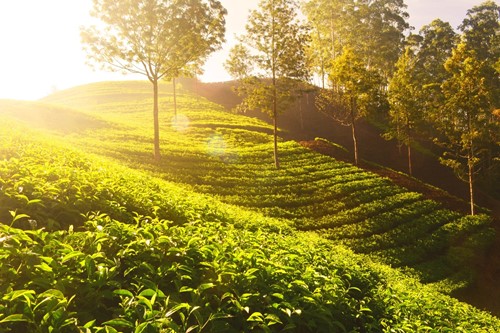
Planting anything on an incline might seem like more trouble than it's worth. However, if your yard has any slopes, you could be at risk for soil erosion and landslides. The best way to avoid them is to plant trees, shrubs or other plants on the slope to strengthen the ground. Here are some tips for gardening on a slope:
There are several different types of plants that will grow well on a slope. One type is ground-cover plants that spread out to form a mat of vegetation and roots. Plants that have deep roots and plants that grow multiple stems from the same root are also beneficial. Try ornamental grasses, sprawling shrub roses and clover.
It's also important to consider the environmental needs of the plants you choose. If you have a sunny slope, try catmint, creeping juniper, rosemary and purple coneflower. If your slope is mostly shaded, opt for carpet cypress, periwinkle or pachysandra.
You'll want to avoid planting things that grow tall but have shallow root systems. Some examples of trees to avoid because of their roots would be cottonwood or cypress. Both have shallow roots that make them risky to plant around your home and on a slope. Instead of helping prevent erosion, they might cause more damage if they fall during a landslide.
You'll also want to avoid any invasive species that could threaten the local ecosystem. Some invasive plants, like English ivy and vinca, grow quickly and can invade neighboring yards if not properly maintained. Research what plants might be problematic in your area before you get started with your gardening.
Most experts will advise against laying grass turf on a slope. However, if the incline is shallow enough and you don't mind the extra mowing effort, turf can work well on some slopes. The key issue with turf on a slope is watering, as water will drain downhill instead of evenly saturating the lawn. Keep this in mind if you live in a particularly dry climate that would require regular watering.
By using any of these ideas you will be able to plant an eye-catching and effective garden on a slope. Consider these options to prevent erosion and protect your property from possible landslides.

I'm John Mahan, Sales Associate with William Raveis Real Estate, Harwich Port Office.
Throughout his childhood, John Mahan spent summers on Cape Cod at his parents’ home in Dennis Port. His intro to the Cape was, as he puts it, when his parents “carried me down the stairs at Sea Street Beach when I was a week old.” With a lifelong connection to Cape Cod, it seemed only natural for John and his wife, Mary, to move to Harwich – where they still reside – with their two young children in 1996.
Prior to moving to Cape Cod, John lived in the Worcester-Auburn area where he worked for Mass Electric for 10 years and was a member of the International Brotherhood of Utility Workers. When John and his family moved to the Cape, he worked at NSTAR for six years.
John began his career in real estate in 2002 when he joined Team Waystack Realty in Harwich Port. He has been a consistent top producing realtor in the Harwich area for the past 20 years. John’s approachable demeanor, combined with an integral understanding of the Cape Cod residential real estate market, have allowed him to build trusting, long-term relationships with his clients – both sellers and buyers.